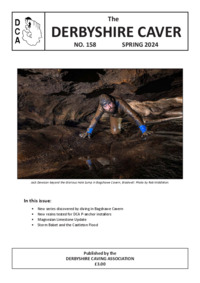David Rose
Active member
Hello, UKcaving hive mind. Does anyone know if the rescue mounted by the YRC from Sunset Hole in 1910 (as described in the YRC journal that year) the first in either British or global caving history?

I know he's had a lot of incidents, but...Try Alan Gray.
It was a big rock.Must have been nasty, as he has multiple Graves...
& from justgottadive.com:The first recorded cave dive was in 1773 when a tourist tried to free dive through Buxton Water Sump, I think he survived.
The first recorded cave dive was a free dive, conducted by an avid British spelunker named Mr. Day. He attempted to pass through the Buxton Water Sump at Peak Cavern in 1773, holding his breath while trying to get through a section of submerged passageway. Not surprisingly, Mr. Day soon found himself in dire straits and was rescued by another member of his exploration party who dragged him out by the arm.
